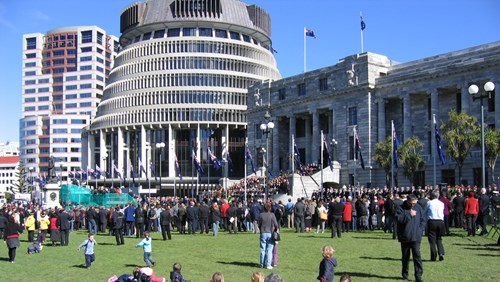
Housing Approval Lag Fuels Building Bottlenecks
State Government data shows Sydney councils are falling behind on approvals for higher density residential housing – exactly the type of homes the government is counting on to ease the housing crisis.
Property Council of Australia analysis shows fewer than one in four of Greater Sydney’s 33 councils (24%) met the target assessment time for higher density residential approvals in the seven months to 28 February 2025. The average wait time now 173 days, and many projects remain stuck in the system for more than 250 days.
Property Council NSW Executive Director Katie Stevenson said that while Australian Bureau of Statistics (ABS) data in January saw a brief uplift in building approvals, the sharp fall to 3,390 approvals in February confirmed more time is needed for planning reforms to take effect.
“The February numbers are a serious warning sign. We need to be approving over 6,250 homes a month to be on track – but in February, we only managed just over half that,” Ms Stevenson said.
“The NSW Government sees higher density housing development as key to solving the housing crisis, yet barely half of DAs for higher density developments in Greater Sydney get processed on time.
“With some approvals taking more than 250 days, and ABS data showing apartments now average over 2.5 years to build, the timelines are blowing out. When it takes a year or more just to get the green light, many projects become unviable before construction even begins
“The Government has made housing it’s top priority, with promising new planning initiatives in place, but we need a system that delivers consistently. That means faster approvals and real consequences for delays.”
Ms Stevenson welcomed the recent news about government action to support struggling councils and hold under-performing councils and government agencies to account.
“These are welcome steps, and the Property Council has made consistent calls for government to explore more resourcing for struggling councils and to keep all councils and government agencies accountable when it comes to processing DAs.
“But given the government’s focus on infill development, slow processing times in key areas – including many identified for transport oriented development (TOD) – could undermine well-intended efforts to ease the housing crisis.”
Ms Stevenson said while new TOD and Low and Mid-Rise Housing reforms were positive steps, the league table data indicated they could add more pressure on councils already struggling.
“If many councils can’t meet their targets for processing higher density residential developments now, adding more DAs into an overloaded system risks even longer delays so it’s important for government to address this with some urgency,” she said.
“The success of planning reform depends on approvals being processed more efficiently which is why government should maintain focus on council resourcing and on continuing to hold agencies and poor performing councils to account with these league tables.” Ms Stevenson said.
Table: DA Assessment Performance 1 July 2024 -28 Feb 2025.
Source: NSW Government Council league table as at 6 April 2025
https://www.propertycouncil.com.au/media-releases/slow-higher-density-housing-approvals-create-building-bottleneck


